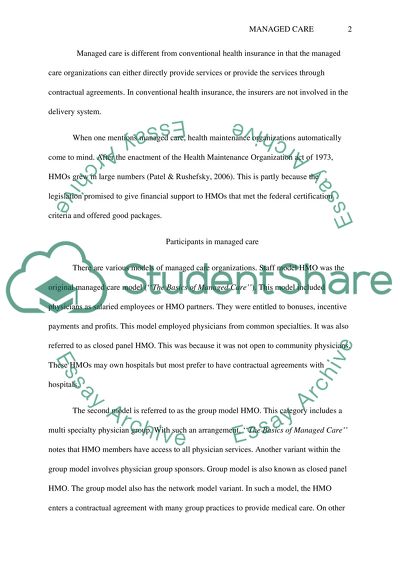Cite this document
(“Managed Care Essay Example | Topics and Well Written Essays - 1250 words”, n.d.)
Managed Care Essay Example | Topics and Well Written Essays - 1250 words. Retrieved from https://studentshare.org/health-sciences-medicine/1443007-managed-care-discussing-the-major-participants-its
Managed Care Essay Example | Topics and Well Written Essays - 1250 words. Retrieved from https://studentshare.org/health-sciences-medicine/1443007-managed-care-discussing-the-major-participants-its
(Managed Care Essay Example | Topics and Well Written Essays - 1250 Words)
Managed Care Essay Example | Topics and Well Written Essays - 1250 Words. https://studentshare.org/health-sciences-medicine/1443007-managed-care-discussing-the-major-participants-its.
Managed Care Essay Example | Topics and Well Written Essays - 1250 Words. https://studentshare.org/health-sciences-medicine/1443007-managed-care-discussing-the-major-participants-its.
“Managed Care Essay Example | Topics and Well Written Essays - 1250 Words”, n.d. https://studentshare.org/health-sciences-medicine/1443007-managed-care-discussing-the-major-participants-its.


